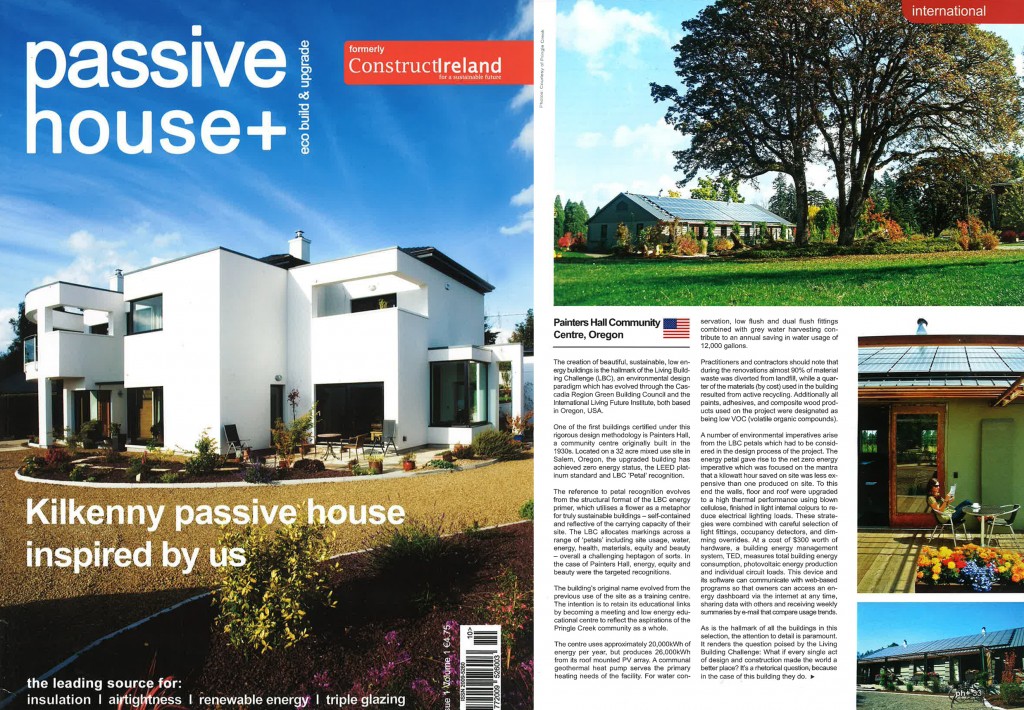
Originally published in Issue 1 Volume 1 of Passive House+ —
The creation of beautiful, sustainable, low energy buildings is the hallmark of the Living Building Challenge (LBC), an environmental design paradigm which has evolved through the Cascadia Region Green Building Council and the International Living Future Institute, both based in Oregon, USA.
One of the first buildings certified under this rigorous design methodology is Painters Hall, a community centre originally built in the 1930s. Located on a 32 acre mixed use site in Salem, Oregon, the upgraded building has achieved zero energy status, the LEED platinum standard and LBC ‘Petal’ recognition.
The reference to petal recognition evolves from the structural format of the LBC energy primer, which utilises a flower as a metaphor for truly sustainable buildings- self-contained and reflective of the carrying capacity of their site. The LBC allocates markings across a range of ‘petals’ including site usage, water, energy, health, materials, equity and beauty – overall a challenging heptagon of sorts. In the case of Painters Hall, energy, equity and beauty were the targeted recognitions.
The building’s original name evolved from the previous use of the site as a training centre. The intention is to retain its educational links by becoming a meeting and low energy educational centre to reflect the aspirations of the Pringle Creek community as a whole.
The centre uses approximately 20,000kWh of energy per year, but produces 26,000kWh from its roof mounted PV array. A communal geothermal heat pump serves the primary heating heeds of the facility. For water conservation, low flush and dual flush fittings combined with grey water harvesting contribute to an annual saving in water usage of 12,000 gallons.
Practitioners and contractors should note that during the renovations almost 90% of material waste was diverted from landfill, while a quarter of the materials (by cost) used in the building resulted from active recycling. Additionally all paints, adhesives, and composite wood products used on the project were designated as being low VOC (volatile organic compounds).
A number of environmental imperatives arise from the LBC petals which had to be considered in the design process of the project. The energy petal gave rise to the net zero energy imperative which was focused on the mantra that a kilowatt hour saved on site was less expensive than one produced on site. To this end the walls, floor and roof were upgraded to a high thermal performance using blown cellulose, finished in light internal colours to reduce electrical lighting loads. These strategies were combined with careful selection of light fittings, occupancy detectors, and dimming overrides. At a cost of $300 worth of hardware, a building energy management system, TED, measures total building energy consumption, photovoltaic energy production and individual circuit loads. This device and its software can communicate with web-based programs so that owners can access an energy dashboard via the internet at any time, sharing data with others and receiving weekly summaries by e-mail that compare usage trends.
As is the hallmark of all the buildings in this selection, the attention to detail is paramount. It renders the question poised by the Living Building Challenge: What if every single act of design and construction made the world a better place? It’s a rhetorical question; because in the case of this building they do.